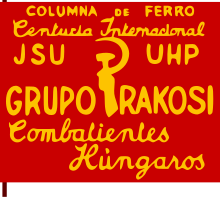
The Spanish Revolution was a workers' social revolution that began at the outbreak of the Spanish Civil War in 1936 and for two to three years resulted in the widespread implementation of anarchist and, more broadly, libertarian socialist organizational principles throughout various portions of the country, primarily Catalonia, Aragon, Andalusia, and parts of the Valencian Community. Much of the economy of Spain was put under worker control; in anarchist strongholds like Catalonia, the figure was as high as 75%. Factories were run through worker committees, and agrarian areas became collectivized and run as libertarian socialist communes. Many small businesses, such as hotels, barber shops, and restaurants, were also collectivized and managed by their workers.
In 1937, the Nationalists, under the leadership of Francisco Franco began to establish their dominance. An important element of support was their greater access to foreign aid, with their German and Italian allies helping considerably. This came just as the French ceased aid to the Republicans, who continued, however, to be able to buy arms from the Soviet Union. The Republican side suffered from serious divisions among the various communist and anarchist groupings within it, and the communists undermined much of the anarchists' organisation.

The siege of Madrid was a two-and-a-half-year siege of the Republican-controlled Spanish capital city of Madrid by the Nationalist armies, under General Francisco Franco, during the Spanish Civil War (1936–1939). The city, besieged from October 1936, fell to the Nationalist armies on 28 March 1939. The Battle of Madrid in November 1936 saw the most intense fighting in and around the city when the Nationalists made their most determined attempt to take the Republican capital.
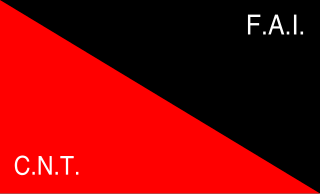
Revolutionary Catalonia was the period in which the autonomous region of Catalonia in northeast Spain was controlled or largely influenced by various anarchist, communist, and socialist trade unions, parties, and militias of the Spanish Civil War era. Although the constitutional Catalan institution of self-government, the Generalitat of Catalonia, remained in power and even took control of most of the competences of the Spanish central government in its territory, the trade unions were de facto in command of most of the economy and military forces, which includes the Confederación Nacional del Trabajo which was the dominant labor union at the time and the closely associated Federación Anarquista Ibérica. The Unión General de Trabajadores, the POUM and the Unified Socialist Party of Catalonia were also prominent.
The Friends of Durruti Group was a Spanish anarchist group commonly known for its participation in the May Days. Named after Buenaventura Durruti, it was founded on 15 March 1937 by Jaume Balius i Mir and Félix Martínez, who had become disillusioned with the policies of the CNT-FAI's leadership. During the May Days in Barcelona, they actively agitated among the anti-government forces, advocating for the formation of a "revolutionary junta", in close collaboration with Spanish Trotskyists. Following the suppression of the uprising, the group began published the newspaper El Amigo del Pueblo, in which they denounced the CNT-FAI for "collaborationism", resulting in their expulsion from the organisation. Their 1938 pamphlet Towards a Fresh revolution, which reaffirmed their proposals for a revolutionary junta, became an influential text within the anarchist current of platformism. But the group ultimately failed to make a broader impact within the Spanish movement and collapsed by the end of the war.

José Pellicer Gandía (1912–1942) was a Valencian anarchist, politician and revolutionary primarily known for being the founder of the Iron Column during the Spanish Civil War. He has been nicknamed the "Valencian Durruti".

The Madrid Defense Council was an ad-hoc governing body that ran Madrid, Spain, for about six months during the Spanish Civil War (1936–39). It was formed in November 1936 after the Spanish Republican government had fled to Valencia when General Francisco Franco's forces advanced on Madrid. It was expected that the city would fall within a few days, but the arrival of the International Brigades halted the rebel advance, and the situation settled into a stalemate. The council was dominated by communists, who had superior organization and propaganda to the other groups. Their policy was to organize the militias into regular troops and focus on defeating the enemy, rather than to undertake revolutionary activity. As time passed there was growing tension between the communists and more radical groups. The council was dissolved in April 1937 and replaced by a new city council.
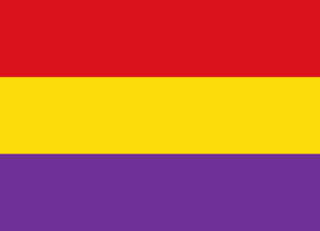
The 84th Mixed Brigade, was a mixed brigade of the Spanish Republican Army in the Spanish Civil War. It was formed in March 1937 with battalions of the Iron Column and was disbanded after the tragic events at Mora de Rubielos when 46 soldiers were shot by firing squad in a decimation following the brigade's Battle of Teruel December combats in harsh winter conditions.
The People's Army of Catalonia was an army created by the Generalitat of Catalonia on December 6, 1936, during the Spanish Civil War. Its existence was more theoretical than real, because the original structure of the popular militias continued to exist despite the efforts of the Generalitat. After the May Days it was dissolved and its structure assumed by the Spanish Republican Army, which definitively militarized the militias of Catalonia and Aragon.

The confederal militias were a movement of people's militia organized during the Spanish Civil War by the dominant organizations of anarchism in Spain: the National Confederation of Labor (CNT) and the Iberian Anarchist Federation (FAI).
The Harriers Column of the FAI, or Los Aguiluchos, was the last of the great Catalan anarcho-syndicalist columns. Later, more militias left Catalonia for the front, but they would no longer do so in the form of a column but rather as reinforcement units of the existing columns. This column was supposed to form a large unit - of around 10,000 combatants - but it ended up reinforcing the Ascaso Column as an autonomous column - with about 1,500 militiamen with 200 militiawomen. Organized in the Bakunin barracks in Barcelona, it was sent to the Huesca front on 28 August, with Juan García Oliver and Miguel García Vivancos leading the column.
The Land and Freedom Column was a militia column organized by the CNT-FAI from the regions of Berguedà and Bages as well as from Barcelona. The column was sent to the Central front in mid-September 1936 to reinforce the republican line against a nationalist force. It had around 1,500 militiamen in its beginnings. The column integrated into the Rosal Column and later fought on the Serra de Montsant front. After the militarization that occurred in the spring of 1937, the column became the 153rd Mixed Brigade.
The Torres-Benedito Column was a militia column that operated at the beginning of the Spanish Civil War.
The Iberia Column was a militia column that operated at the beginning of the Spanish Civil War.
The Maroto column was a militia column that operated at the beginning of the Spanish Civil War.
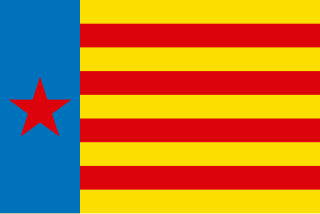
The Popular Executive Committee of Valencia was a revolutionary autonomous entity created on July 22, to confront the Spanish coup of July 1936 which started the Spanish Civil War. It was made up of the political forces of the Popular Front and the trade union forces of the National Confederation of Labor and General Union of Workers. Based in Valencia, it covered most of Valencia province and part of Castellón and Alicante.
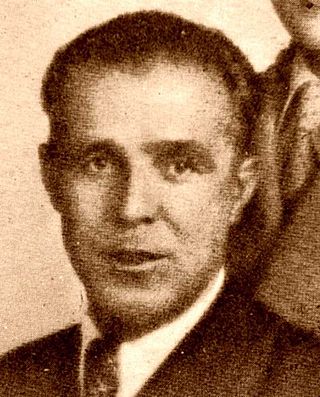
Gregorio Jover Cortés was an Aragonese anarcho-syndicalist and a member of the CNT during the first third of the 20th century. During the Spanish Civil War he was commander of the Ascaso Column and later the militarized 28th Division, which fought on the Aragon front.
The 83rd Mixed Brigade was a unit of the Spanish Republican Army created during the Spanish Civil War from the militarization of the Iron Column. It came to operate on the Teruel, Levante and Central fronts.
The 82nd Mixed Brigade was a unit of the Spanish Republican Army created during the Spanish Civil War. It came to operate on the Teruel and Levante fronts.
Melecio Álvarez Garrido was a Leonese anarcho-syndicalist.
